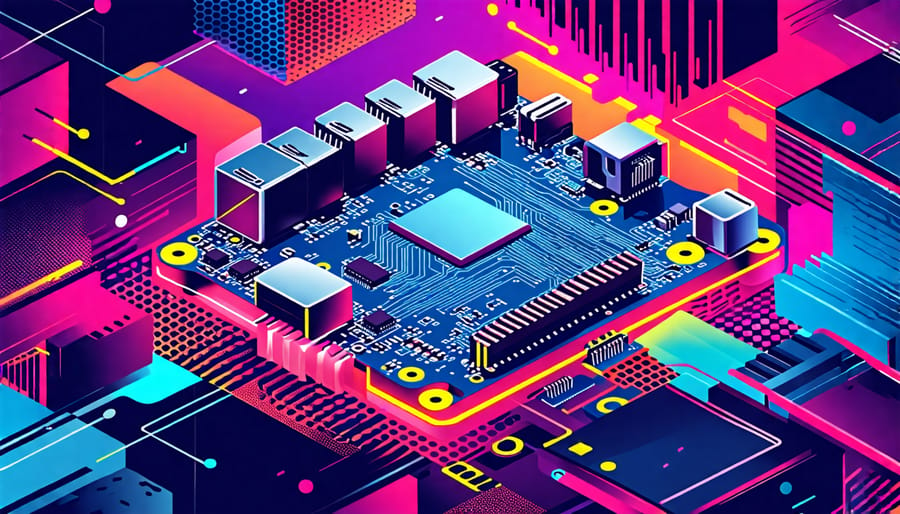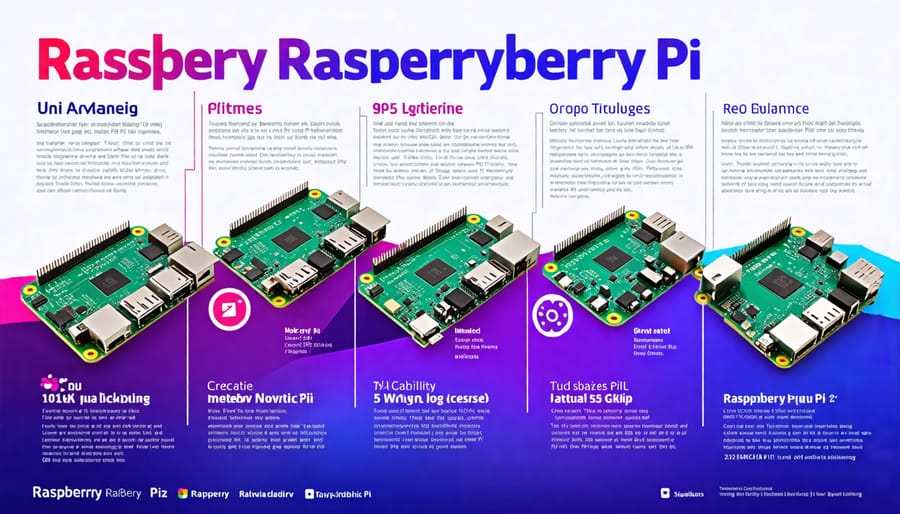Track Raspberry Pi Foundation announcements on their official website and social media for the latest on the Raspberry Pi 5 release. Analyze trends from previous launches, typically 2-4 years apart, to anticipate timing. Explore forums and tech news for rumors and leaks to stay ahead. Assess your current setups and future project goals to determine how the expected features might enhance your work.
Current State of Raspberry Pi Releases
Evolution of Raspberry Pi Models
The Raspberry Pi journey began in 2012 with the launch of the original Model B, designed to encourage computer science learning. As tech enthusiasts and educators embraced these affordable, credit-card-sized computers, the Raspberry Pi Foundation continually refined their products. A notable early advancement was the introduction of the Raspberry Pi 2 in 2015, which offered significant performance improvements over its predecessor. By 2016, the Raspberry Pi 3 emerged, featuring built-in Wi-Fi and Bluetooth, enhancing its versatility for IoT projects.
The evolution continued with the Raspberry Pi 4 Model B in 2019, which revolutionized performance with more RAM options, dual-display output, and USB 3.0 ports, marking a massive leap toward desktop-level capabilities. Each model iteration addressed community feedback, adding more computational power and connectivity improvements. This evolution not only expanded the possibilities for DIY tech projects but also cemented the Raspberry Pi’s role in education. With the impending arrival of the Raspberry Pi 5, users anticipate even greater enhancements to fuel their creative and educational endeavors.

Release Patterns and Timelines
Examining the pattern for Raspberry Pi releases provides valuable insights into predicting the Raspberry Pi 5’s debut. Historically, new models have typically emerged every three to four years, with the Pi 4 launching in June 2019. Following this trajectory, tech enthusiasts anticipate the Pi 5’s release could be imminent. Raspberry Pi’s focus has consistently been on incremental but impactful upgrades, ensuring compatibility and improved performance for projects and educational use. While speculations abound regarding enhanced processing power, connectivity, and energy efficiency, it’s crucial to stay updated for official announcements, transforming innovation aspirations into hands-on reality.
What to Expect from the Raspberry Pi 5
Speculated Features
With anticipation building around the Raspberry Pi 5, enthusiasts are buzzing about potential hardware upgrades and new features. Historically, each Raspberry Pi model has pushed the envelope of performance and versatility. The Raspberry Pi 5 is expected to follow this trend, possibly featuring a more powerful processor, improved RAM options, and enhanced graphics capabilities. These upgrades would not only support more demanding applications but also bring Raspberry Pi closer to desktop-level performance. Tech enthusiasts hope for improved connectivity options, such as faster Ethernet and additional USB ports, enabling more complex and varied Raspberry Pi Zero projects. Other speculated features include better support for AI and machine learning tasks and enhanced energy efficiency, making the device even more appealing for educational environments and eco-conscious hobbyists. With these potential enhancements, the Raspberry Pi 5 could serve as an incredible tool for hobbyists and educators eager to explore more sophisticated projects, from home automation systems to advanced robotics.

Technology Trends Influencing the Raspberry Pi 5
The technological landscape is rapidly advancing, setting the stage for what we might expect from the Raspberry Pi 5’s capabilities. One notable trend is the rise of artificial intelligence and machine learning applications. With the increasing demand for AI workloads at the edge, the Raspberry Pi 5 could feature upgraded processing power and specialized hardware accelerators to support these tasks. Such enhancements would enable hobbyists and educators to explore AI applications more effectively right from their workstations or classrooms.
Another trend is the push towards more seamless and efficient IoT connectivity. The Raspberry Pi 5 might benefit from improved wireless communication standards, like Wi-Fi 6 and Bluetooth 5.2, ensuring robust and faster connections for a plethora of IoT projects. This would make it easier for users to build and manage smart home devices or automation systems.
Additionally, advancements in graphics and display technologies might influence the Raspberry Pi 5’s design. Enhanced GPU capabilities could lead to better support for high-resolution displays and smoother multimedia projects, opening new pathways for creative media applications and educational tools.
These technological trends indicate that the Raspberry Pi 5 will not only continue to serve as a versatile platform for learning and prototyping but also expand the scope of possibilities for tech enthusiasts and educators alike.
Implications for Raspberry Pi Projects
Enhanced Capabilities for Developers
The anticipation surrounding the Raspberry Pi 5 is not only about its release date but also about the enhanced capabilities it promises for developers. With each new model, Raspberry Pi has consistently improved its hardware specifications, offering more memory, faster CPU, enhanced graphics, and additional connectivity options. These enhancements open up a world of possibilities for programming and development projects, making complex applications more feasible on the humble Raspberry Pi.
For developers, the expected improvements mean the potential for building more sophisticated IoT applications, handling data-intensive programming languages, or even experimenting with machine learning models. The faster processing power could lead to smoother multimedia projects, enabling more immersive gaming experiences or advanced robotics that require rapid data processing.
Furthermore, developers who use Raspberry Pi as a learning tool will find the enhanced capabilities beneficial for teaching programming and electronics in more engaging ways. Beginners and seasoned programmers alike will appreciate the opportunity to explore innovative projects without the limitations posed by previous models. Ultimately, the Raspberry Pi 5 promises to be a powerful platform for unleashing creativity and enhancing technological literacy among developers globally.
Opportunities for Educators and Hobbyists
The Raspberry Pi 5 is poised to create exciting new opportunities for educators and hobbyists alike. With its anticipated advancements in processing power and connectivity, this new model will likely open doors to more sophisticated projects and educational tools. For teachers, the Raspberry Pi 5 promises to make coding and electronics more accessible to students. The increased capabilities mean classrooms can explore diverse STEM projects, from building a simple robot to developing a fully functional Smart Mirror. These hands-on activities not only engage students but also provide practical skills that are increasingly vital in the tech-driven world.
For hobbyists, the Raspberry Pi 5 is expected to bring new dimensions to creating custom solutions. Whether you’re keen on smart home projects, media servers, or even experimenting with IoT devices, the possibilities are vast. This upcoming release offers an exciting chance to push boundaries, experiment, and innovate in ways that were previously challenging. By offering more power at an accessible price, the Raspberry Pi 5 strengthens its role as a key tool in the maker movement, making it easier for anyone with a passion for tinkering to bring their ideas to life.
As we conclude our exploration of what’s buzzing in the Raspberry Pi community, it’s clear that the anticipation surrounding the Raspberry Pi 5 is well-founded. With each successive release, Raspberry Pi has consistently pushed the envelope in performance and capabilities. For tech enthusiasts, hobbyists, and educators, the next iteration promises enhanced processing power and innovative features designed to fuel creativity and learning. While official announcements are still pending, staying informed on development updates will position you to leverage these advancements in your projects effectively. Be sure to keep an eye out for more information on the Raspberry Pi 5’s launch and specifications.


